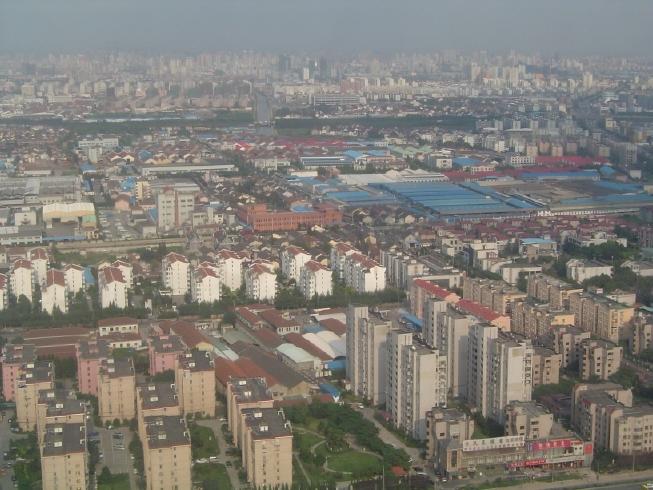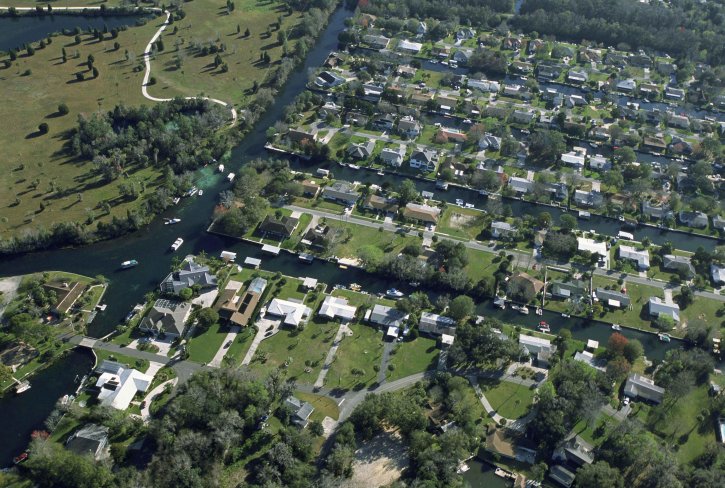22.5: Ciudades sustentables
- Page ID
- 54659
\( \newcommand{\vecs}[1]{\overset { \scriptstyle \rightharpoonup} {\mathbf{#1}} } \)
\( \newcommand{\vecd}[1]{\overset{-\!-\!\rightharpoonup}{\vphantom{a}\smash {#1}}} \)
\( \newcommand{\dsum}{\displaystyle\sum\limits} \)
\( \newcommand{\dint}{\displaystyle\int\limits} \)
\( \newcommand{\dlim}{\displaystyle\lim\limits} \)
\( \newcommand{\id}{\mathrm{id}}\) \( \newcommand{\Span}{\mathrm{span}}\)
( \newcommand{\kernel}{\mathrm{null}\,}\) \( \newcommand{\range}{\mathrm{range}\,}\)
\( \newcommand{\RealPart}{\mathrm{Re}}\) \( \newcommand{\ImaginaryPart}{\mathrm{Im}}\)
\( \newcommand{\Argument}{\mathrm{Arg}}\) \( \newcommand{\norm}[1]{\| #1 \|}\)
\( \newcommand{\inner}[2]{\langle #1, #2 \rangle}\)
\( \newcommand{\Span}{\mathrm{span}}\)
\( \newcommand{\id}{\mathrm{id}}\)
\( \newcommand{\Span}{\mathrm{span}}\)
\( \newcommand{\kernel}{\mathrm{null}\,}\)
\( \newcommand{\range}{\mathrm{range}\,}\)
\( \newcommand{\RealPart}{\mathrm{Re}}\)
\( \newcommand{\ImaginaryPart}{\mathrm{Im}}\)
\( \newcommand{\Argument}{\mathrm{Arg}}\)
\( \newcommand{\norm}[1]{\| #1 \|}\)
\( \newcommand{\inner}[2]{\langle #1, #2 \rangle}\)
\( \newcommand{\Span}{\mathrm{span}}\) \( \newcommand{\AA}{\unicode[.8,0]{x212B}}\)
\( \newcommand{\vectorA}[1]{\vec{#1}} % arrow\)
\( \newcommand{\vectorAt}[1]{\vec{\text{#1}}} % arrow\)
\( \newcommand{\vectorB}[1]{\overset { \scriptstyle \rightharpoonup} {\mathbf{#1}} } \)
\( \newcommand{\vectorC}[1]{\textbf{#1}} \)
\( \newcommand{\vectorD}[1]{\overrightarrow{#1}} \)
\( \newcommand{\vectorDt}[1]{\overrightarrow{\text{#1}}} \)
\( \newcommand{\vectE}[1]{\overset{-\!-\!\rightharpoonup}{\vphantom{a}\smash{\mathbf {#1}}}} \)
\( \newcommand{\vecs}[1]{\overset { \scriptstyle \rightharpoonup} {\mathbf{#1}} } \)
\( \newcommand{\vecd}[1]{\overset{-\!-\!\rightharpoonup}{\vphantom{a}\smash {#1}}} \)
\(\newcommand{\avec}{\mathbf a}\) \(\newcommand{\bvec}{\mathbf b}\) \(\newcommand{\cvec}{\mathbf c}\) \(\newcommand{\dvec}{\mathbf d}\) \(\newcommand{\dtil}{\widetilde{\mathbf d}}\) \(\newcommand{\evec}{\mathbf e}\) \(\newcommand{\fvec}{\mathbf f}\) \(\newcommand{\nvec}{\mathbf n}\) \(\newcommand{\pvec}{\mathbf p}\) \(\newcommand{\qvec}{\mathbf q}\) \(\newcommand{\svec}{\mathbf s}\) \(\newcommand{\tvec}{\mathbf t}\) \(\newcommand{\uvec}{\mathbf u}\) \(\newcommand{\vvec}{\mathbf v}\) \(\newcommand{\wvec}{\mathbf w}\) \(\newcommand{\xvec}{\mathbf x}\) \(\newcommand{\yvec}{\mathbf y}\) \(\newcommand{\zvec}{\mathbf z}\) \(\newcommand{\rvec}{\mathbf r}\) \(\newcommand{\mvec}{\mathbf m}\) \(\newcommand{\zerovec}{\mathbf 0}\) \(\newcommand{\onevec}{\mathbf 1}\) \(\newcommand{\real}{\mathbb R}\) \(\newcommand{\twovec}[2]{\left[\begin{array}{r}#1 \\ #2 \end{array}\right]}\) \(\newcommand{\ctwovec}[2]{\left[\begin{array}{c}#1 \\ #2 \end{array}\right]}\) \(\newcommand{\threevec}[3]{\left[\begin{array}{r}#1 \\ #2 \\ #3 \end{array}\right]}\) \(\newcommand{\cthreevec}[3]{\left[\begin{array}{c}#1 \\ #2 \\ #3 \end{array}\right]}\) \(\newcommand{\fourvec}[4]{\left[\begin{array}{r}#1 \\ #2 \\ #3 \\ #4 \end{array}\right]}\) \(\newcommand{\cfourvec}[4]{\left[\begin{array}{c}#1 \\ #2 \\ #3 \\ #4 \end{array}\right]}\) \(\newcommand{\fivevec}[5]{\left[\begin{array}{r}#1 \\ #2 \\ #3 \\ #4 \\ #5 \\ \end{array}\right]}\) \(\newcommand{\cfivevec}[5]{\left[\begin{array}{c}#1 \\ #2 \\ #3 \\ #4 \\ #5 \\ \end{array}\right]}\) \(\newcommand{\mattwo}[4]{\left[\begin{array}{rr}#1 \amp #2 \\ #3 \amp #4 \\ \end{array}\right]}\) \(\newcommand{\laspan}[1]{\text{Span}\{#1\}}\) \(\newcommand{\bcal}{\cal B}\) \(\newcommand{\ccal}{\cal C}\) \(\newcommand{\scal}{\cal S}\) \(\newcommand{\wcal}{\cal W}\) \(\newcommand{\ecal}{\cal E}\) \(\newcommand{\coords}[2]{\left\{#1\right\}_{#2}}\) \(\newcommand{\gray}[1]{\color{gray}{#1}}\) \(\newcommand{\lgray}[1]{\color{lightgray}{#1}}\) \(\newcommand{\rank}{\operatorname{rank}}\) \(\newcommand{\row}{\text{Row}}\) \(\newcommand{\col}{\text{Col}}\) \(\renewcommand{\row}{\text{Row}}\) \(\newcommand{\nul}{\text{Nul}}\) \(\newcommand{\var}{\text{Var}}\) \(\newcommand{\corr}{\text{corr}}\) \(\newcommand{\len}[1]{\left|#1\right|}\) \(\newcommand{\bbar}{\overline{\bvec}}\) \(\newcommand{\bhat}{\widehat{\bvec}}\) \(\newcommand{\bperp}{\bvec^\perp}\) \(\newcommand{\xhat}{\widehat{\xvec}}\) \(\newcommand{\vhat}{\widehat{\vvec}}\) \(\newcommand{\uhat}{\widehat{\uvec}}\) \(\newcommand{\what}{\widehat{\wvec}}\) \(\newcommand{\Sighat}{\widehat{\Sigma}}\) \(\newcommand{\lt}{<}\) \(\newcommand{\gt}{>}\) \(\newcommand{\amp}{&}\) \(\definecolor{fillinmathshade}{gray}{0.9}\)Introducción
La sostenibilidad, desde la ciencia hasta la filosofía y el estilo de vida, encuentra expresión en la forma en que damos forma a nuestras ciudades Las ciudades no son solo una colección de estructuras, sino grupos de personas que viven juntos diferentes estilos de vida. Cuando preguntamos si un estilo de vida es sustentable, nos preguntamos si puede perdurar. Algunos arqueólogos postulan que el desequilibrio ambiental condenó a muchas civilizaciones antiguas fallidas. ¿Cómo podría ser la ciudad sustentable, cómo funcionaría y cómo podemos evitar un desequilibrio que conduzca al colapso de nuestra civilización material? Al intentar visualizar la “ciudad sustentable” debemos discernir qué factores influirán en su forma y forma en el futuro.
Entonces, ¿cuál es el mayor obstáculo para diseñar/actualizar una “ciudad sustentable”?
Expansión: La expansión externa de poblaciones humanas (típicamente en desarrollo residencial y comercial de baja densidad) hacia los bordes exteriores de ciudades/pueblos.
A medida que se expande la expansión, come en tierras naturales y agrícolas y aísla a las personas. La gente tiene que viajar cada vez más para ir al trabajo, a la tienda de abarrotes, a un hospital, etcétera. Lo que esto significa es que las ciudades/pueblos tienen que encontrar soluciones para trasladar agua, residuos, energía, servicios, desarrollo/mantenimiento vial, etcétera a estas comunidades. Como tal, existen temas crónicos con expansión en ambos lados que dificultan la oportunidad y el progreso debido a las limitaciones económicas.
Es importante tener en cuenta que la expansión puede ocurrir a diferentes escalas:
- Expansión de baja densidad: Edificios pequeños de 1-2 pisos en altas densidades. La expansión de baja densidad se puede distinguir aún más por los ingresos, ya que los vecindarios tienden a ser segregados por esto. (Ej.: América del Norte)
- Expansión de alta densidad: Edificios de gran altura en densidades altas (Ej: China)


Entonces, ¿qué se puede hacer para diseñar/actualizar y avanzar hacia “ciudades sostenibles”?
- Desarrollo de uso mixto: Presta usos residenciales, comerciales, culturales, institucionales o industriales, donde esas funciones están integradas física y funcionalmente, y que proporciona conexiones peatonales. ¡Haciendo que las ciudades sean transitables!
- Equidad geográfica: Sistema de circulación definido por razones de cómo se mueven las personas. Esto significa más bicicletas, caminar, transporte público (en muchas formas) y no autos. ¡Equidad de las calles!
- Preservar: Preservar la tierra, la cultura y la biodiversidad tanto como sea posible.
- Mix: Mezclar ingresos, culturas, espacios verdes, opciones de transporte público, etcétera tanto como sea posible. Permitir que las personas se conecten y se conviertan en vecinos no extraños
- Enfoque: Hacer coincidir la densidad de una comunidad para satisfacer las necesidades de tránsito/servicio.
Video\(\PageIndex{a}\): Perspectivas: Peter Calthrope describe 7 principios para construir mejores ciudades.
Atribución
Rachel Schleiger modificada de Medio ambiente y sociedad en un mundo cambiante por PennState REA Initiative (CC-BY-NC-SA)


